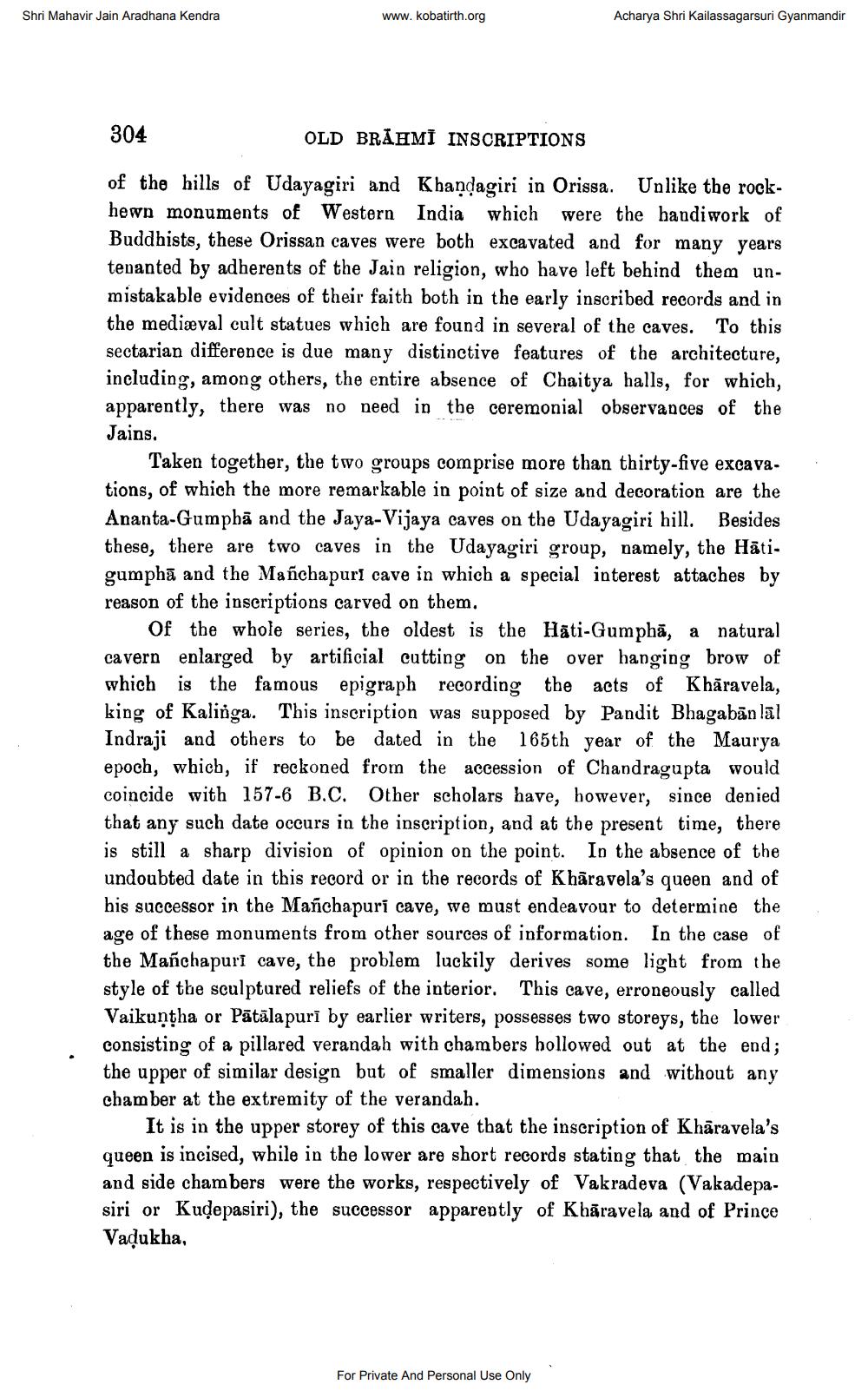________________
Shri Mahavir Jain Aradhana Kendra
www.kobatirth.org
Acharya Shri Kailassagarsuri Gyanmandir
304
OLD BRAHMI INSCRIPTIONS
of the hills of Udayagiri and Khandagiri in Orissa. Unlike the rockhewn monuments of Western India which were the handiwork of Buddhists, these Orissan caves were both excavated and for many years tenanted by adherents of the Jain religion, who have left behind them unmistakable evidences of their faith both in the early inscribed records and in the mediaeval cult statues which are found in several of the caves. To this sectarian difference is due many distinctive features of the architecture, including, among others, the entire absence of Chaitya halls, for which, apparently, there was no need in the ceremonial observances of the Jains.
Taken together, the two groups comprise more than thirty-five excavations, of which the more remarkable in point of size and decoration are the Ananta-Gumpbā and the Jaya-Vijaya caves on the Udayagiri hill. Besides these, there are two caves in the Udayagiri group, namely, the Hāti. gumphā and the Mañchapuri cave in which a special interest attaches by reason of the inscriptions carved on them.
Of the whole series, the oldest is the Hati-Gumphā, a natural cavern enlarged by artificial cutting on the over hanging brow of which is the famous epigraph recording the acts of Khāravela, king of Kalinga. This inscription was supposed by Pandit Bhagabanlal Indraji and others to be dated in the 165th year of the Maurya epoch, which, if reckoned from the accession of Chandragupta would coincide with 157-6 B.C. Other scholars have, however, since denied that any such date occurs in the inscription, and at the present time, there is still a sharp division of opinion on the point. In the absence of the undoubted date in this record or in the records of Khāravela's queen and of his successor in the Mañchapuri cave, we must endeavour to determine the age of these monuments from other sources of information. In the case of the Mañchapuri cave, the problem luckily derives some light from the style of the sculptured reliefs of the interior. This cave, erroneously called Vaikuntha or Pātālapuri by earlier writers, possesses two storeys, the lower consisting of a pillared verandah with chambers hollowed out at the end; the upper of similar design but of smaller dimensions and without any chamber at the extremity of the verandah.
It is in the upper storey of this cave that the inscription of Khāravela's queen is incised, while in the lower are short records stating that the main and side chambers were the works, respectively of Vakradeva (Vakadepasiri or Kudepasiri), the successor appareptly of Khāravela and of Prince Vadukha,
For Private And Personal Use Only




